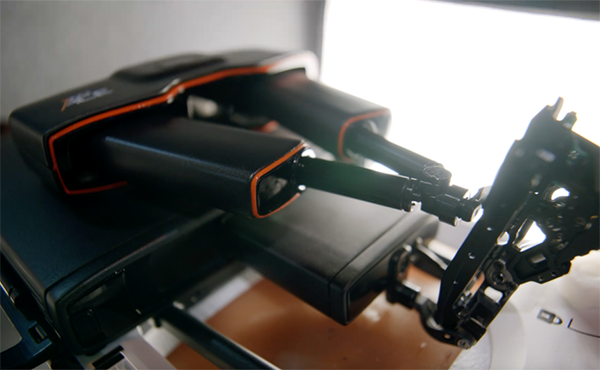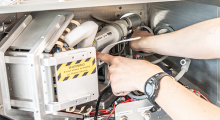XACT Robotics last week announced that its robotic surgical system has been used successfully in more 100 percutaneous procedures in the human body. The system was consistently able to reach small areas of interest, said the company.
“We are very pleased to be commemorating this historic milestone, which is a reflection of the dedication of our employees and the radiology teams who have recognized the considerable advantages that this technology delivers to patients and hospital systems,” stated Chen Levin, CEO of XACT Robotics. “This significant achievement is especially impressive given that we launched the system and reached over 100 cases even during the COVID-19 pandemic.”
“As more hospitals around the world adopt XACT's robotic system and access to care continues to expand, we anticipate achieving new levels of momentum in the adoption of this technology by leading radiology practices around the world,” Levin said.
Founded in 2013, XACT Robotics is a privately held company with offices in Hingham, Mass., and Caesarea, Israel. The company claimed that it has created the world's first and only “hands-free” robotic system combining image-based planning and monitoring with instrument insertion and steering capabilities.
XACT ACE enables surgeons to get to areas of interest
In percutaneous procedures for diagnosing and treating certain cancers and other diseases, accuracy in reaching targets of interest within the body is extremely important, said XACT. In many cases, movement caused by the patient or within the body can change the location of the target of interest during the procedure.
With percutaneous procedures that are carried out and completed manually, it is often necessary to repeat a surgery if an instrument does not reach its target successfully, increasing risk for both patients and healthcare providers.
XACT Robotics asserted that its technology can improve accuracy and consistency so any user can reach targets that are small or in hard-to-reach areas, typically on the first insertion. This can support earlier diagnosis and intervention and lead to better patient outcomes, it said.
XACT Robotics added that its ACE system is the only technology that can steer an instrument through a non-linear trajectory.
In more than 100 cases performed at leading medical centers in the U.S. and Israel, including Lahey Hospital & Medical Center (LHMC) in Massachusetts, Sarasota Interventional Radiology in Florida, and Hadassah Medical Center in Israel, XACT's system could reach small areas of interest in the abdomen and lung.
“Since adopting this system, we have been impressed by the robot's ability to consistently reach very small targets on the first insertion regardless of tissue density, structure, or elements,” said Dr. Gerald Grubbs, a radiologist at Sarasota Interventional Radiology. “The robot can also reach the target even if it moves.”
“The accuracy of the XACT ACE robotic system has helped us reach locations in the body that would be very challenging using traditional manual methods, and it represents a significant advance in care for patients with cancer and other serious diseases,” Grubbs said.
Article topics
Email Sign Up














